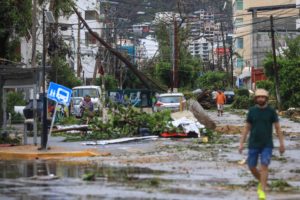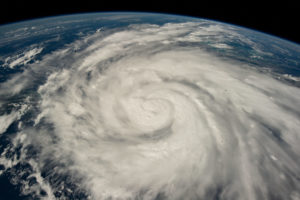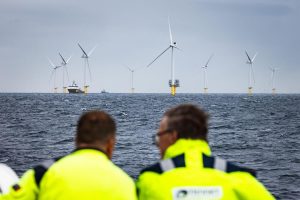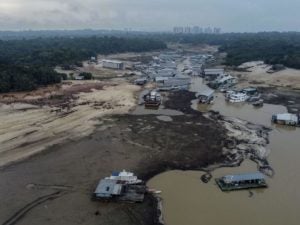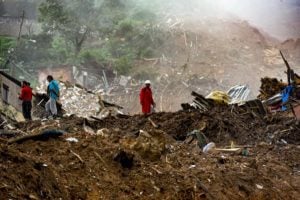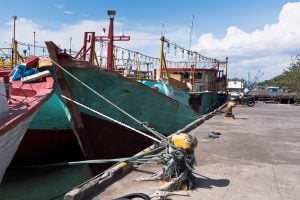On 25 October, Hurricane Otis caused devastation as it hit the state of Guerrero, on Mexico’s Pacific coast, leaving at least 45 people dead and more than 20 missing, and damaging at least 200,000 homes. Ahead of making landfall, the US National Hurricane Center described its arrival as “a nightmare scenario” for southern Mexico.
Nearly a month later, Acapulco, the worst-hit city, continues to suffer from the impacts of the storm. Public transport systems are yet to be restored, and prices have risen sharply; across the city queues for ATMs stretch for blocks; and residents are seeing shortages of goods, compounded by the complexity of transporting groceries – impacts that are being disproportionately felt by low-income residents.
Acapulco has seen a wave of support from across Mexico, including massive aid shipments of food and other essential supplies to deal with the consequences of the disaster. But the magnitude of the destruction poses a monumental challenge that will require months, even years, to recover from.
To hear more on the impact and scale of Hurricane Otis, Diálogo Chino spoke with Marjory González, outreach coordinator for the Mexican Network of Climate Scientists (REDCiC). This new group brings together 80 experts in climate, meteorology, risk, civil protection and resilience, and is dedicated to the search for solutions in the adaptation, mitigation and reduction of climate change in Mexico.
González emphasised how economic inequality has been a key multiplier of the hurricane’s effects, and told of the need for increased preparation and a change of mentality in the face of such disasters – the frequency and scale of which are increasing in Latin America. This transformation, she said, must come urgently, while structural changes made in the region could set an example for the rest of the world, as it faces increasingly extreme weather events due to climate change.
Diálogo Chino: How can we understand what happened with Hurricane Otis on a scientific level?
Marjory González: Hurricanes are a natural phenomenon, and it is very important [for the Earth’s functioning] that they recur, but they are being exacerbated by global warming. With this hurricane, we saw rapid acceleration: in 12 hours, it went from a tropical storm to a category five hurricane, the highest possible level. Rapid acceleration is a rare phenomenon and, even within the rare range, this one happened too quickly.
Why did this acceleration occur? It has to do with the fact that we have had record ocean temperatures since March. Records have been broken every month, and all that heat serves as fuel for hurricanes. We are also facing the beginning of the El Niño phenomenon, which involves more hurricanes in the Pacific than in the Atlantic.
So far, there does not seem to be more hurricanes. But category four and five hurricanes, which are the most violent, are beginning to increase.
Was Acapulco prepared for what happened?
There were many people visiting Acapulco at the time the hurricane struck, and a recurring complaint of those affected was that when they asked hotel staff what they should be doing, despite already knowing that a hurricane was coming, the staff response was that nothing was going to happen, because they were used to it raining a lot there. The people in Acapulco did not understand the seriousness of the issue and, even if you understood it, you had nowhere to take refuge because they do not have refuge areas. This is despite Hurricane Paulina having already occurred in the city in 1997, leaving more than 200 dead – and there had also been other violent ones before.
The people in Acapulco did not understand the seriousness of the issue and, even if you understood it, you had nowhere to take refuge because they do not have refuge areasMarjory González, outreach coordinator for the Mexican Network of Climate Scientists
In the era after Paulina, civil protection measures were taken to alert the population. In fact, there are sirens in Acapulco, but the city was not subsequently built around this risk, whereas in Cancún, in the Riviera Maya region, the population and hoteliers have been trained to a greater extent. In Cancún, which has also suffered from the effects of similar phenomena, they have hotels with anti-hurricane windows. In Acapulco, however, there are many glass structures, all of which shattered.
The Mexican Network of Climate Scientists has spoken about the impacts that low-income groups suffer from natural disasters. What happened in this case?
Acapulco is the most important port in the Pacific, and practically lives off tourism. The city was very famous in the fifties, and people like Michael Jackson, Elizabeth Taylor, Elvis Presley and Jim Morrison came for their vacations. At the same time, it is a tremendously unequal city: there is the hotel zone that has areas with many resources, but the rest of the city is actually poor or middle class, so the inequality is huge.
These inequalities make recovery much more difficult for people. For example, in the hotel zone, there is public transport, but on the outskirts, [the network] is very poor. Furthermore, if you have a precarious housing situation and a very precarious income – if you live from day to day and are a street taco vendor, for example – the situation becomes more difficult because you only have income if you go out to work. For people who do not have that, nor access to healthcare and drinking water, sewage treatment, paved streets, or transportation, recovery from this type of phenomenon becomes very difficult.
The phenomena are natural, but the disasters are socially constructed. They are the socioeconomic outcome of the way we inhabit physical space, and not just physical constructions; they are social differences, [such as] access to services and rights.
The hurricane set off alarm bells for many in Mexico. Looking forward, what has to change?
There is already some preparation, but it has to be applied. In Acapulco, there is a risk map, but the territory is not organised based on it. Private interests weigh more than the issue of risks and civil protection. This is one of the things that has to radically change – and it can be done. In the case of Mexico City, as it is an area of high seismicity, building regulations were modified in 1985 and have been modified several times since. We currently have one of the best construction [regulations] in the world.
What we need do to is fight corruption: Acapulco cannot continue to be built in the same way. In some cases, you have to think “maybe this hotel should not go there”, and “perhaps we have to relocate the population in these hills to affordable housing areas with services”. It is not about removing people and leaving them homeless – it is about putting them in a decent place, with services and decent housing. We have to consider that, due to susceptibility to both earthquakes and hurricanes, there are areas that cannot be inhabited.
What else has to happen in the future to prepare for such events?
Faced with climate change, we have to consider that higher category hurricanes will continue to increase, so monitoring systems must be strengthened. Mexico should have “hurricane hunting” planes, because the current models [of observation] are not going to work for us. When the US planes passed over [Otis], that’s when they were able to see the phenomenon. Although we do have very good data and a very good installed scientific capacity in terms of both technicians and scientists, we need the technology, and to have more data for the Pacific area.
We must plan for the next 30 or 40 years, and plan for what happens if there is a possibility of a hurricane in the next 24 hours – how the population should react, and how exactly it should respondMarjory González, outreach coordinator for the Mexican Network of Climate Scientists
We must also strengthen urban infrastructure and make it more dignified and equitable. We must continue fighting poverty so that there is greater resilience in the population. We must think about how the entire city should be rebuilt and, in general, how cities in the Pacific should be built down to the minutiae: how the response should be organised in neighbourhoods so that people know whether they have to look for shelter; which are the exit routes, and so on. We must plan for the next 30, 40 years, and plan for what happens if there is a possibility of a hurricane in the next 24 hours – how the population should react, and how exactly it should respond.
